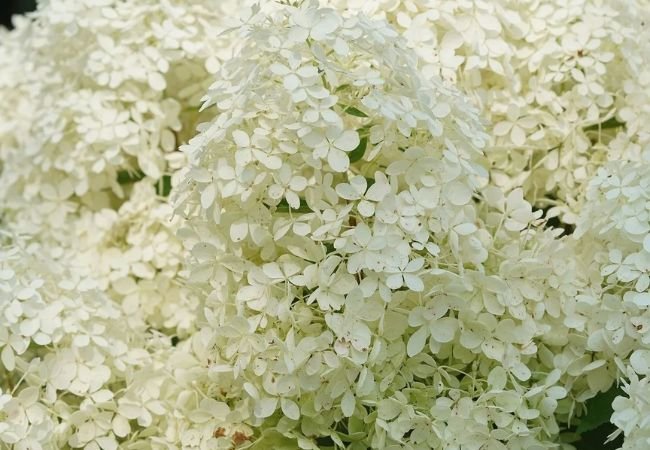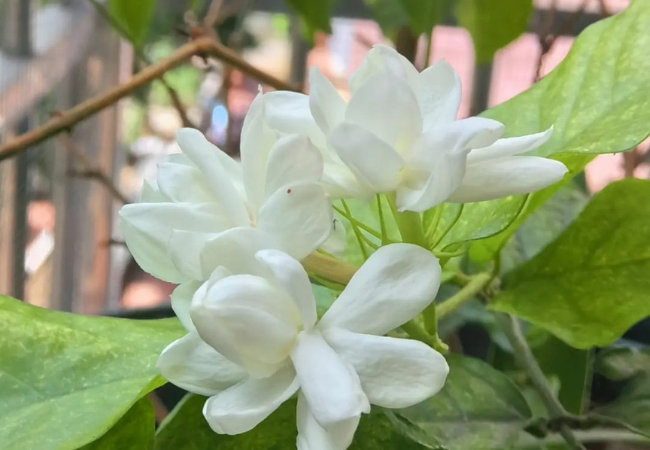Discover the beauty and care of Hydrangeas Flowers. Learn how to grow these colorful shrubs, change their color and enjoy them in your garden year-round.
Have you seen those big, round flowers that come in blue, pink, or white? Those are probably Hydrangeas! These pretty shrubs are popular in many USA gardens. Let’s learn more about Hydrangeas and how you can grow them.
Certainly! Here’s a chart with information about Hydrangea flowers:
| Aspect | Details |
|---|---|
| Botanical Name | Hydrangea spp. |
| Common Name | Hydrangea |
| Plant Type | Deciduous shrub |
| Hardiness Zone | Zones 3-9 (depending on species) |
| Sun Exposure | Part shade to full shade |
| Soil Type | Well-drained, moist, fertile soil |
| Watering Needs | Moderate; prefers consistently moist soil |
| Growth Habit | Bushy, spreading |
| Height/Spread | 3-15 feet tall / 3-15 feet spread (depending on species and cultivar) |
| Special Features | Large, showy flower clusters in various colors (pink, blue, white, purple), blooms from late spring to summer, some species can change flower color based on soil pH, used in landscaping and as cut flowers |
What are Hydrangeas?

Hydrangeas are flowering shrubs that have large, round clusters of flowers. They bloom in summer and fall, adding lots of color to gardens.
Key Features
- Big, round flower clusters
- Colors include blue, pink, purple and white
- Bloom from summer to fall
- Can grow as shrubs or small trees
Types of Hydrangeas
There are several types of Hydrangeas:
- Bigleaf (Mophead and Lacecap)
- Panicle
- Smooth
- Oakleaf
- Climbing
Each type has different needs and looks a bit different. The U.S. National Arboretum has more information about different plant varieties.
Growing Hydrangeas
If you want to grow Hydrangeas, here’s what you need to know:
- Sunlight: Most like morning sun and afternoon shade.
- Soil: They prefer well-draining, rich soil.
- Water: They need regular watering, especially when young.
- Planting: Spring or fall are good times to plant.
Hydrangeas are pretty easy to grow once they’re established.
Changing Hydrangea Color
One cool thing about some Hydrangeas is that you can change their color! This works for bigleaf Hydrangeas:
- For blue flowers: Add aluminum sulfate to the soil
- For pink flowers: Add garden lime to the soil
The Cooperative Extension can provide more specific advice for your area.
Uses of Hydrangeas
Hydrangeas have several uses:
- Garden beauty: They add color and interest to gardens.
- Cut flowers: They look great in vases and last a long time.
- Dried flowers: You can dry the blooms for long-lasting arrangements.
- Privacy screens: Some types grow large enough to use as natural fences.
Caring for Your Hydrangeas
To keep your Hydrangeas healthy:
- Pruning: Different types need different pruning. Some bloom on old wood, others on new wood.
- Fertilizing: Use a balanced fertilizer in spring.
- Mulching: Add mulch to keep soil moist and cool.
- Winter care: In cold areas, protect plants with burlap wraps.
Problems and Solutions
Hydrangeas can have some issues:
- Not blooming: This is often due to incorrect pruning or late frosts.
- Pests: Watch for aphids and spider mites. Use insecticidal soap if needed.
- Leaf spots: Remove affected leaves and avoid overhead watering.
Hydrangeas in History and Culture
Hydrangeas have been grown for centuries. They’re native to Asia and the Americas. In Japan, they’re associated with apologies and gratitude. In the USA, they became popular in the 1900s.
The Smithsonian Gardens has more information about the history of garden plants.
Hydrangeas in Floral Design
Hydrangeas are popular in floral arrangements:
- Wedding bouquets: Their large size makes a big impact.
- Centerpieces: A few stems can fill a whole vase.
- Dried arrangements: They keep their color when dried.
For more floral design ideas, check out the American Institute of Floral Designers.
Hydrangeas are beautiful, versatile shrubs that can add a lot to your garden. They come in many colors, are relatively easy to care for, and can even change color with some simple soil adjustments. Whether you have a big yard or just a small patio, there’s probably a Hydrangea that’s right for you.
Why not try growing some Hydrangeas in your garden? With their big, colorful blooms, they’re sure to become a favorite!
For more gardening tips and plant care guides, visit usagardenhub.com.






4 Comments on “Hydrangeas : Beautiful, Colorful Shrubs for Your Garden”